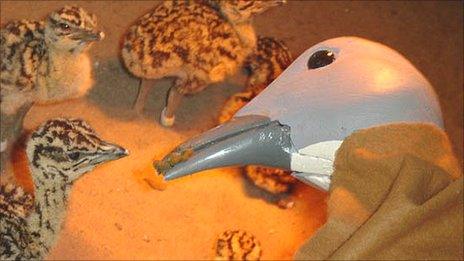Great bustards 'establishing' in the UK
- Published
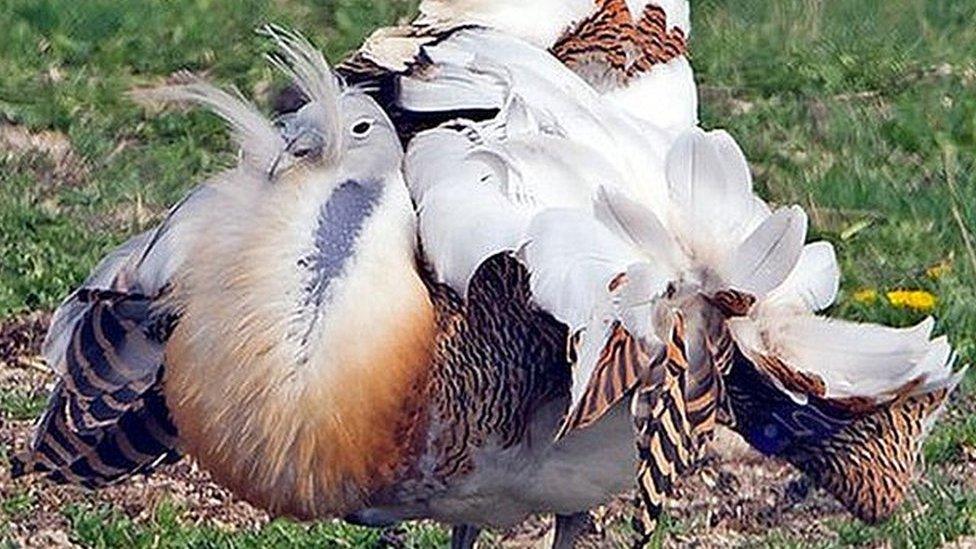
The great bustard was hunted to extinction in Britain in the 1830s
Great bustards are "on the point" of becoming self sustainable in the UK for the first time in 185 years.
The world's heaviest flying bird was hunted to extinction in the country, with the last bustard shot in 1832.
Since 2004, the Great Bustard Group (GBG) has released hundreds of chicks on Salisbury Plain in Wiltshire.
David Waters, from the GBG, said if it was a "reasonable year" it would be the first "new great bustard population" to be established "anywhere in the world."
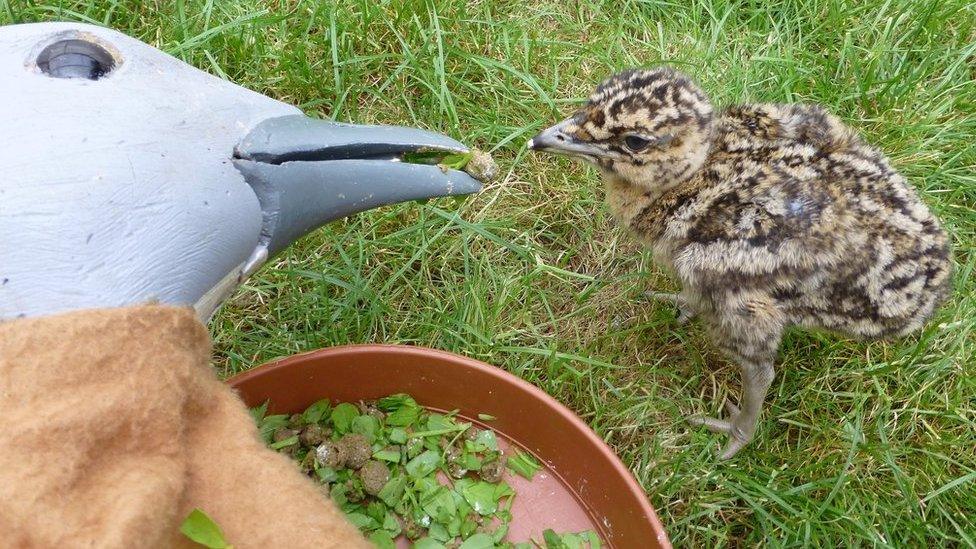
It is hoped that by 2019 the number of "release birds" will have reached 100
Over the past 13 years, a population of about 50 birds has been established from chicks brought in from Russia and Spain.
It is hoped that by 2019 the number of "release birds" will have reached 100.
"The birds have started to breed. We had six nests last year and we'll have a theoretical maximum this year of 21 nests," said Mr Waters.
"And if we have a reasonable year - it will be first time a new great bustard population has been established anywhere in the world."
Mr Waters, who set up the GBG 19 years ago, said once the Wiltshire population was "self sustaining" the group would "stop bringing birds in".
"We'd like to increase it a little bit more to make it more secure but we're at that point where it's starting to happen on its own," he added.
An adult great bustard can be up to a metre (3ft) tall and weigh up to 44lb (20kg). Its wingspan can reach nearly eight feet (2.4m).
The bustard's size made it an easy target for hunters, leading to its extinction.
- Published2 June 2016
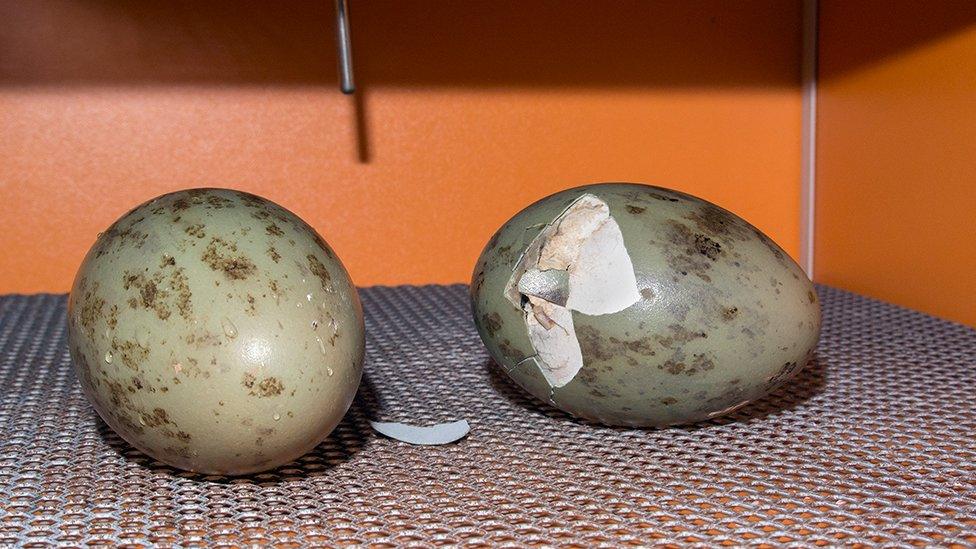
- Published24 July 2014
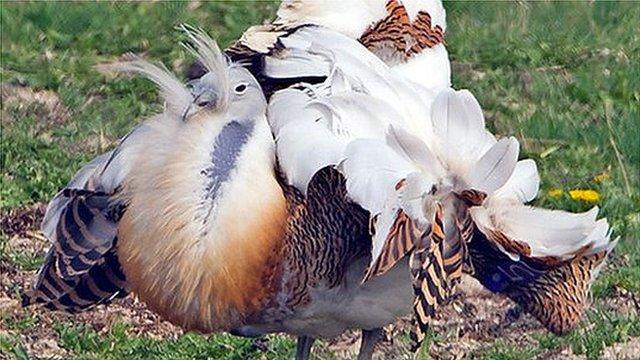
- Published12 July 2012
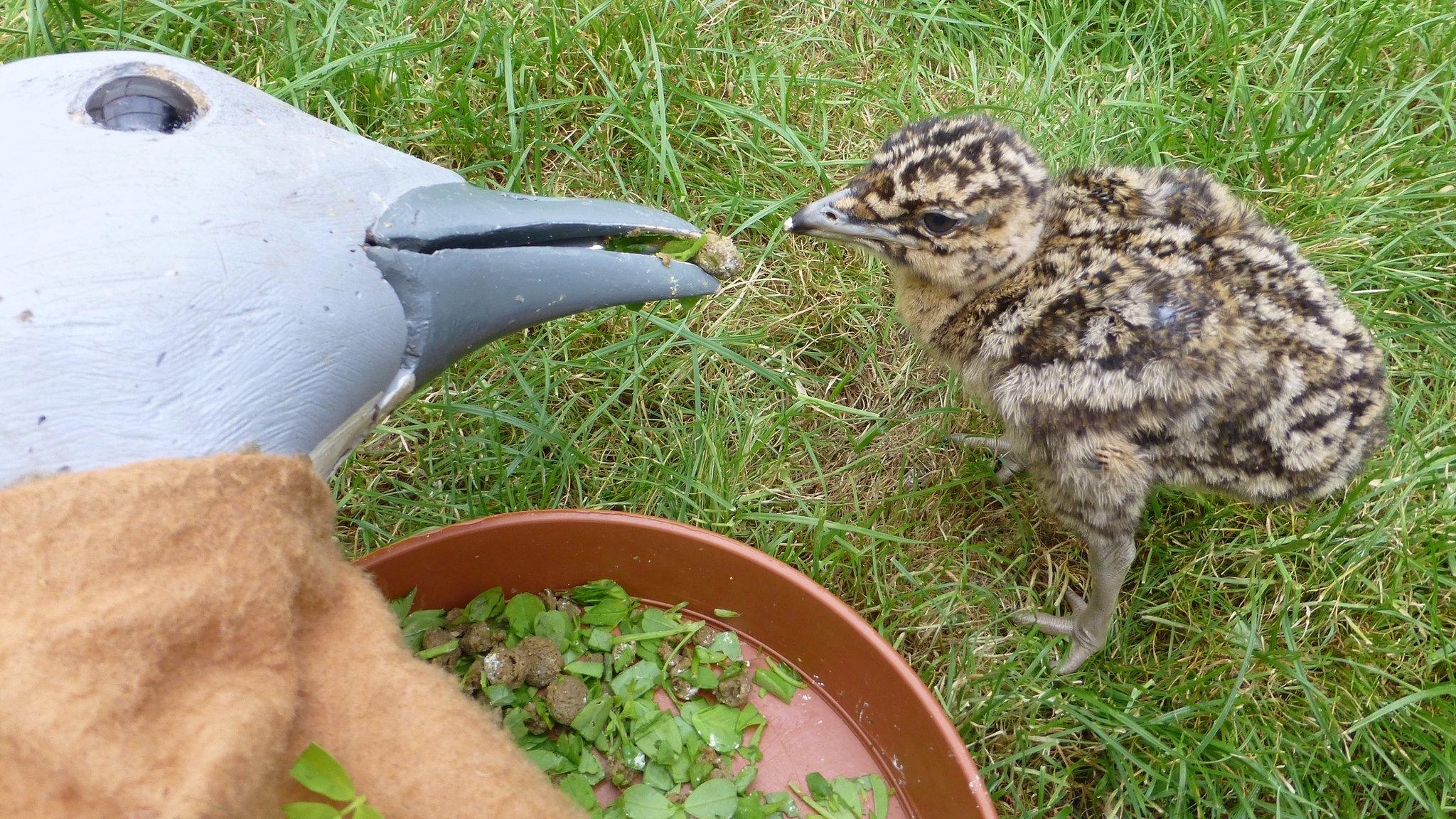
- Published29 May 2012
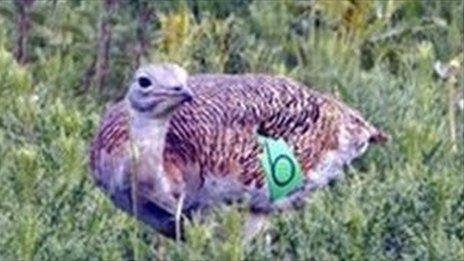
- Published12 September 2011
